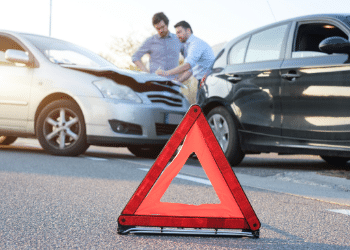Every June, workers across America celebrate National Safety Month, established by the National Safety Council in 1996 with the goal of increasing awareness of health and safety risks and, ideally, decreasing the number of preventable injuries and deaths.
For this year’s National Safety Month, we want to help the NSC in encouraging safety every day, no matter your location. Perhaps unsurprisingly, most safety incidents occur on worksites, but unsafe conditions can of course arise anywhere.
Keep reading to find seven basic safety tips to keep in mind anywhere: at work, at home or even in the car.
Jobsite Safety Tips
In 2019, the U.S. Bureau of Labor Statistics found that there were 5,333 workplace fatalities, the highest recorded since 2007. Additionally, for the third year in a row, there were 2.8 million workplace injuries.

Understanding the specific hazards found at your worksite is important for creating a detailed safety program, but here are a few safety tips that can come in handy in nearly any situation.
- Never take shortcuts on procedures.
- Obey all safety signs, stickers and tags.
- Be aware of changes to processes.
- Always wear personal protective equipment.
- Understand and practice proper hazard communication.
- Use tools and other equipment appropriately.
- Report any hazardous conditions to your manager or supervisor immediately.
Looking for more online safety training courses?
Office Safety Tips
When you think of on-the-job incidents, it is very likely you think of locations such as construction sites or warehouses. However, there are some injury types that are far more common in an office setting.
For instance, the CDC has found that office workers are 2 to 2.5 times more likely to suffer a debilitating injury after a fall than non-office workers, and musculoskeletal disorders, which typically occur because of poor ergonomics, have accounted for 33% of all worker injuries in past years.
Though office safety may seem simple and straightforward, there are some steps every worker can take to make their office safer for themselves and their coworkers.
- Clean up shared spaces if you make a mess.
- Keep your workspace neat and organized.
- Make sure emergency exit routes are clear.
- Sit and stand with good posture, and take short breaks to stretch.
- Immediately notify others of any hazards you come across.
- Use a headset for frequent phone use.
- Keep computer and electrical cords well managed and, if possible, hidden.
In-Home Safety Tips
You may think of your home as your own little safe haven, and while that can certainly be true for many reasons, in-home accidents are extremely common and, often, very dangerous.
In 2019, there were more than 26,200,000 medically consulted injuries, and nearly 94,000 deaths, that occurred because of household incidents.
Below are some simple safety tips to help keep yourself — and anyone other resident or visitor — safe at home.
- Never leave sharp objects or utensils misplaced or unattended.
- Ensure electrical cords are safely tucked away.
- Take precautions with flammable liquids, chemicals and anything producing fumes.
- Always install stable and sturdy railings on both sides of the stairs.
- Check smoke detectors regularly and replace the batteries at least once a year.
- Establish a safety exit strategy and practice with all family members.
- Have easy access to important phone numbers, such as the police, fire department, poison control, and trusted family, friends or neighbors.
Driving Safety Tips

For the majority of Americans, we have been hearing about vehicle safety since we were 16, or maybe even younger. However, there are still roughly 16,438 car crashes per day in the U.S. and more than 42,000 people died in car crashes in 2020.
While it may be too early for the official contributing factors for all of these fatal crashes, NSC President and CEO Lorraine Martin explains, “We know it’s speeding. We know it’s driving without a seatbelt. And we know it’s driving impaired…and distracted.”
Though you have likely heard all these driving safety tips before, there is never a wrong time to refamiliarize yourself with some basic safety measures to put in place every time you get in the car — for work or for pleasure.
- Always wear your seatbelt, whether as a driver or a passenger.
- Obey all speed limits and other road signs.
- Never text and drive.
- Make adjustments to how you drive to account for weather.
- Never drive under the influence of alcohol or drugs.
- Plan your route before getting in the car.
- Avoid in-car distractions
Prepare Your Employees For Safety
Of course, not all these safety tips apply to the workplace, but every employer should want their employees to stay safe no matter where they are. Teaching your employees to be aware of — and keep an eye out for — common safety hazards can help to benefit everyone.
For more than 20 years, SafetySkills has helped train employees around the world on both workplace and off-the-job hazards. Our training can be individually assigned so you can create a custom training program that can be completed at any time, from anywhere, on any device as long as the user has access to the internet.
Whether you want to have your employees learn about something that can be crucial on the jobsite such as lockout/tagout procedures, or you want to help them stay safe while mowing the lawn, SafetySkills offers more than 750 courses to fit your every need.
Contact SafetySkills today to see how working with us can help you and your employees stay safer while on the job, at home, or wherever they are.


